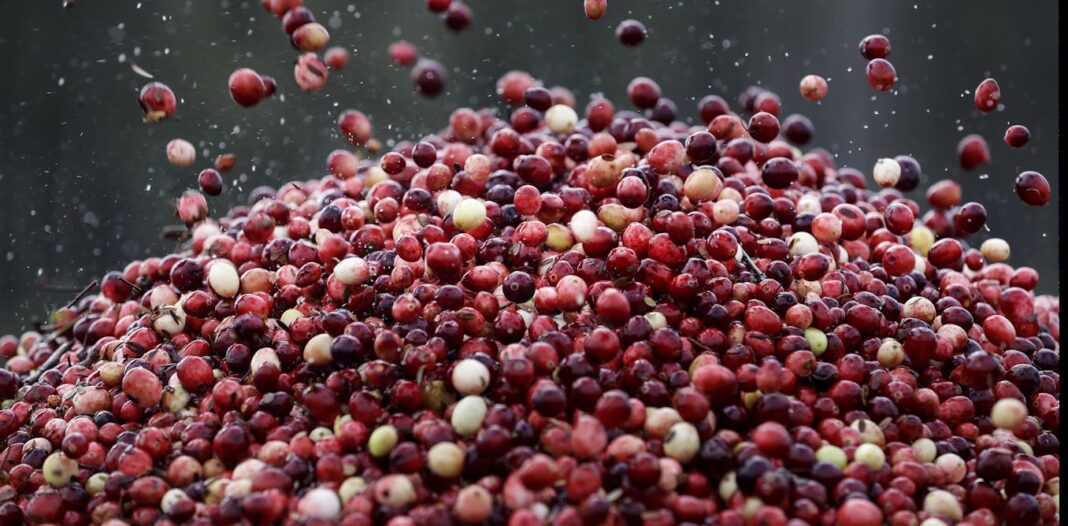Type 1 Diabetes Defined
Type 1 diabetes is all day every day, with no breaks during sleep, no holidays or weekends off, no remission and no cure. Type 1 diabetics don’t make insulin, a hormone that is required to live that promotes the uptake of glucose, or sugar, into cells. The glucose in your cells then supplies your body with energy at the molecular level.
Consequently, Type 1 diabetics take insulin by injection, or via an insulin pump attached to their bodies, and hope that it works well enough to stabilize blood sugar and metabolism, minimize health complications over time and keep us alive.
Cranberries, a Seasonal Treat
Cranberries are native to North America and grow well in the Northeastern and Midwestern states, where they are in season between late September and December. They’re a staple on holiday tables all over the country.
One cup of whole, raw cranberries contains 190 calories. They are 87% water, with trace amounts of protein and fat, 12 grams of carbohydrates and just over 4 grams of soluble fiber. Soluble fiber combines well with water, which is good for digestive health and can slow the rise of blood glucose.
Cranberries without Sugar?
Type 1 diabetics – or anyone who wants to reduce the added sugars they’re consuming – can try a few culinary tactics to lower their sugar intake while still enjoying this holiday treat.
Don’t cook your cranberries much longer after they pop. You’ll still have a viscous cranberry liquid without the need for as much sugar, since cooking concentrates some of the bitter compounds, making them more pronounced in your dish.
Adding spices to your cranberries can enhance the dish’s flavor without extra sugar. Adding cinnamon, clove, cardamom, nutmeg and other warming spices gives the dish a depth of flavor. Adding heat with a spicy chili pepper can make your cranberry dish more complex while reducing sourness and astringency. Adding salt can reduce the cranberries’ bitterness, so you won’t need lots of sugar.
For a richer flavor and a glossy quality, add butter. Butter also lubricates your mouth, which tends to compliment the dish’s natural astringency. Other fats such as heavy cream or coconut oil work, too.
Adding chopped walnuts, almonds or hazelnuts can slow glucose absorption, so your blood glucose may not spike as quickly. Some new types of sweeteners, such as allulose, taste sweet but don’t raise blood sugar, requiring minimal to no insulin.
Conclusion
This holiday season you can easily cut the amount of sugar added to your cranberry dishes and get the health benefits without a blood glucose spike. With a few simple tweaks, you can enjoy the festive flavors of cranberries while keeping your blood sugar in check.
FAQs
Q: Why are cranberries so high in sugar?
A: Cranberries contain natural sugars, but most recipes call for added sugars to balance out the fruit’s natural tartness and bitterness.
Q: Can I still enjoy cranberries if I have Type 1 diabetes?
A: Yes! With a few simple adjustments, you can enjoy cranberries while keeping your blood sugar in check. Try reducing the amount of sugar added, using spices to enhance flavor, and incorporating healthy fats and nuts to slow glucose absorption.
Q: What are some alternatives to sugar in cranberry recipes?
A: Try using spices like cinnamon, clove, and nutmeg to add flavor without sugar. You can also use sweeteners like allulose, which tastes sweet but doesn’t raise blood sugar.





